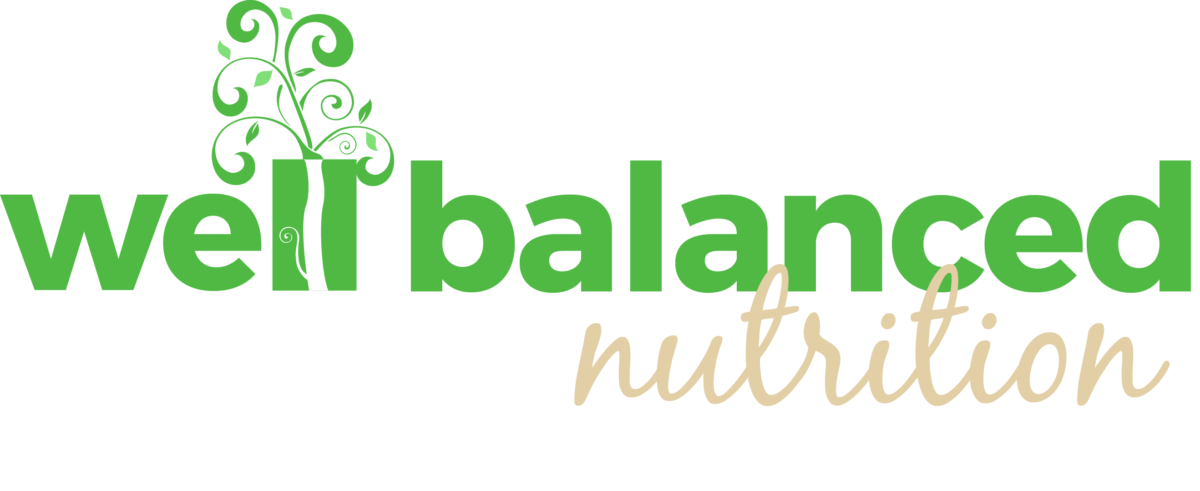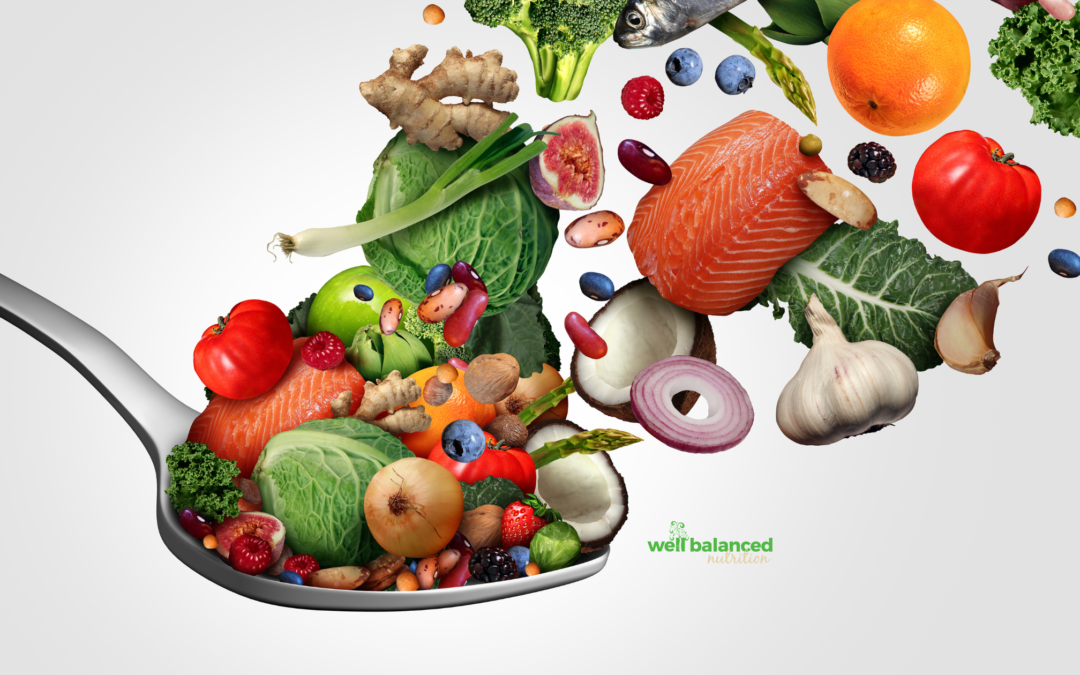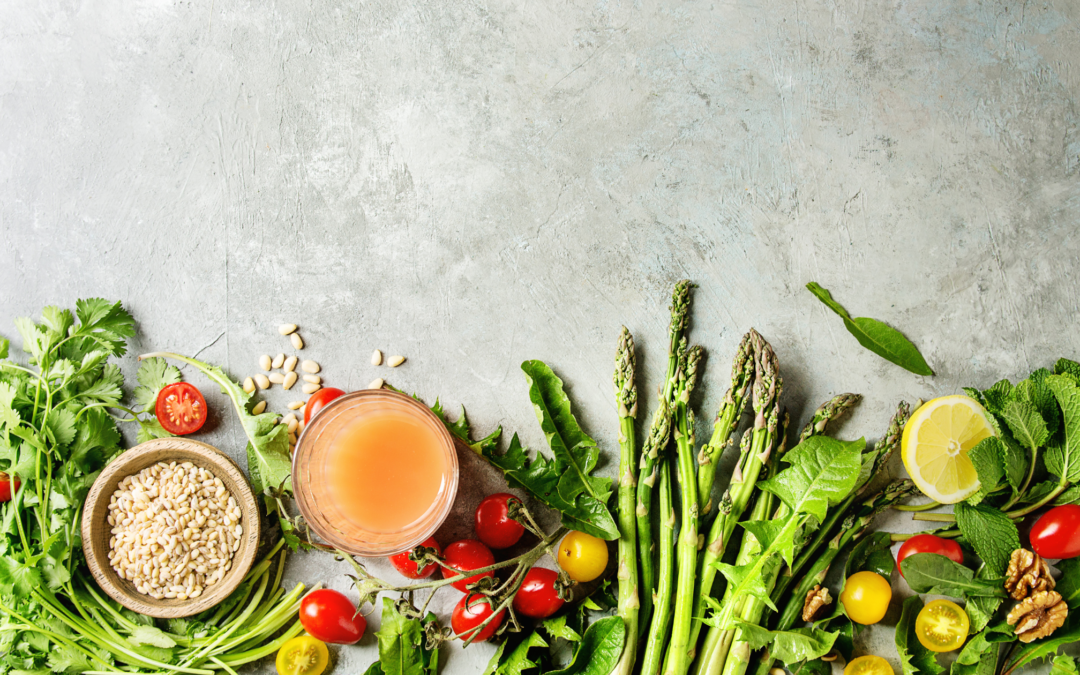We all have something that makes us tick…. biological clocks. The fan favorite is the circadian rhythm, responsible for helping shape your behavioral, physical, and mental patterns on a 24-hour basis. However, those with female reproductive organs have a second internal clock called the infradian rhythm. Alisa Viti, CEO of FLO Living, notes that this clock works on a 28-day basis, regulating the menstrual cycle, which is made of 4 phases: menstruation, the follicular phase, ovulation, and the luteal phase. As you embark on the infradian journey, your hormones change with the seasons of the cycle, causing a cascade of effects in your body. Therefore, nutrition can be a key component in supporting your body through each phase. So let’s find out what foods best fit the phase you’re in!
Menstruation
Menstruation is the phase of disposing the endometrial lining that built up from the previous cycle. On average, it can last anywhere from 1-7 days. During this time, hormone (progesterone and estrogen) levels start to decline. Estrogen hits its lowest point right before the flow. So what does this mean? Menstruation is the perfect time to slow down, rest, and honor your body because it is experiencing some inflammation during this phase.
Foods to enjoy during your period include:
- Iron-rich foods such as:
- Canned or dried peas and beans
- Soybeans, tofu, tempeh
- Lentils
- Pumpkin, flax, and sesame seeds
- Chicken, beef, liver, lamb, turkey, eggs
- Clams, oysters, shrimp
- Seaweed, nori
- Enriched grains (including enriched bread, pasta, cereal)
- Broccoli, string beans, dark leafy greens
- Protein-packed foods like:
- Chicken, turkey, lean ground beef
- Salmon, shrimp, whitefish
- Tofu, spirulina, kidney beans, chickpeas, green peas
- Healthy, friendly fats such as:
- Avocado
- Olive oil
- Ghee
- Nut butters
- Anti-inflammatory foods/drinks to help with symptoms:
- Ginger
- Turmeric
- Green, black, oolong, or raspberry leaf teas
- Limit or avoid pro-inflammatory foods like fried foods, ultraprocessed foods high in refined sugars, dairy products, and fatty foods, as these can worsen symptoms
Follicular phase
As the bleeding comes to an end, you transition into the follicular phase, which typically occurs 7-10 days after menstruation ends. The coaches at Flo Living note, in the beginning hormones are at their lowest, but slowly begin to rise throughout this phase, preparing your body for ovulation. So, it is common to feel like your best, energized self. You might feel more focused, motivated, calm and in control during this time. You might notice you aren’t as hungry as other times of the month as metabolism is slightly slower during this time. It is good to focus on balance, nutrient density, fiber, and color during this phase.
Foods to eat during this phase of your cycle:
- Chicken and eggs
- Oats and barley
- Broccoli, carrots, kale, spinach, and peas
- Berries, apples, pears
- Flax seeds, cashews, and walnuts
- Sauerkraut and kimchi
Ovulation
Up next is ovulation! Typically taking place mid-cycle and averaging about 3-4 days in length. Estrogen levels continue to rise, and luteinizing hormone (LH) triggers the release of an egg. Testosterone will also be on the up and up, making you feel energetic. This is a great time to focus on fiber to help your body flush out excess estrogen to avoid cramps or pain. Supplying your body with nutritionally rich foods will give it the fuel it needs.
Foods to eat during ovulation include:
- Smoothies and salads
- Raw fruits and veggies like:
- Spinach
- Tomato
- Cucumber
- Bell peppers
- Corn
- Asparagus
- Raspberries, strawberries, blueberries, and blackberries
- Cruciferous veggies:
- Broccoli
- Cauliflower
- Kale
- Cabbage
- Radishes
- Pecans, pumpkin seeds, and chocolate
Luteal Phase
The 10-14 day period after ovulation is called the luteal phase. Estrogen and progesterone levels continue to climb, and metabolism speeds up slightly.
However, in the second half of the luteal phase, right before menstruation begins again, hormone levels will dip down to their lowest point again. This is usually the time many experience fatigue, irritability, poor concentration, GI upset, bloating, and/or appetite changes. However, adequate nutrition can help prevent the hormone imbalances that cause PMS. Since your metabolism can be higher during this time, don’t be surprised if you find yourself a bit hungier than usual. Opt for nutrient-dense foods and don’t refrain from protein and healthy fats.
- Help stabilize your blood sugar during this phase with complex carbs like:
- Sweet potatoes
- Root veggies
- Quinoa
- Squash
- Help prevent fluid retention with magnesium and calcium rich foods such as:
- Cooked leafy greens
- Dark chocolate
- Cocoa powder
- Pumpkin seeds
- Almonds
- Dark leafy greens
- Yogurt
- Sardines
- If you experience painful cramps, try adding ginger to your meals or beverages; it has been proven to help with painful cramping
- Other great foods to eat during this time:
- Raisins
- Dates
- Cabbage
- Turkey
- Chickpeas
- Spirulina
- Beef
- Turkey
Monitoring your cycle is a great way to keep in touch with your body, allowing you to record symptoms and optimize nutrition depending on your body’s needs. Many period tracking apps help you do so. Cycle tracking provides you with the information you need to support your body and recognize when something may be out of balance with your hormones. Nutrition and lifestyle choices play a major role in hormonal balance and reproductive organ health. Focusing on freshness, balance, nutrient density, and variety can benefit your body as it travels along its 28-day cycle.



